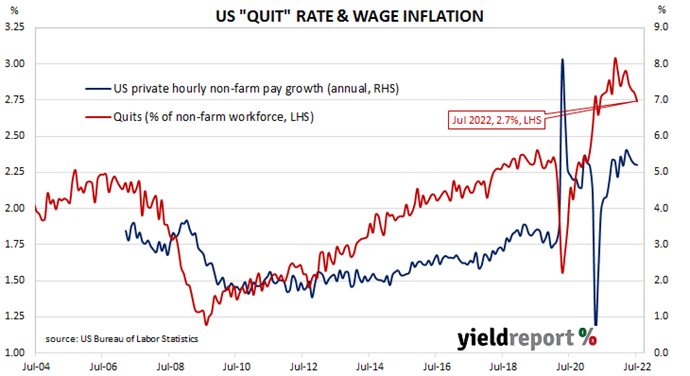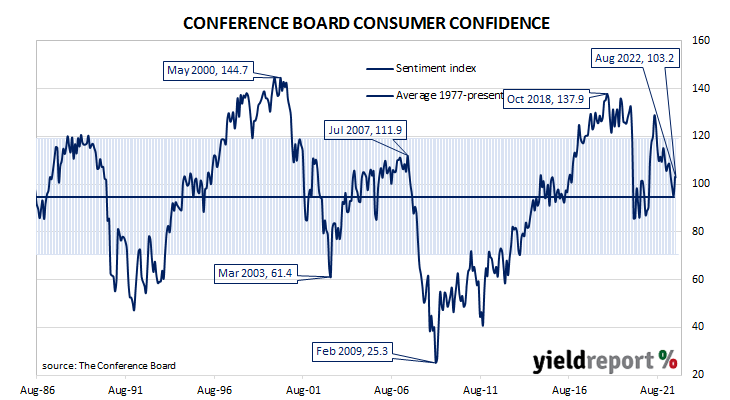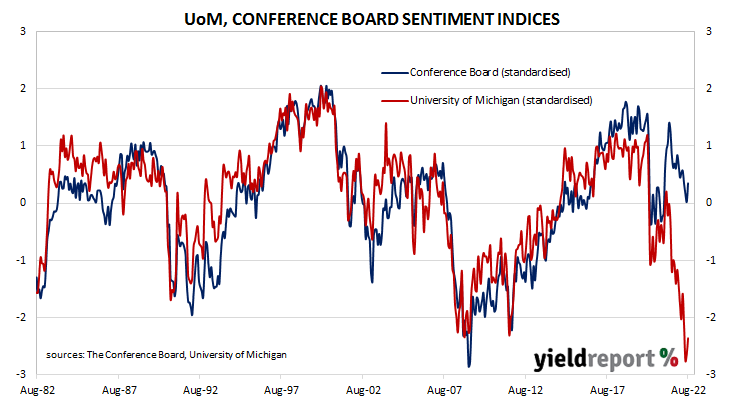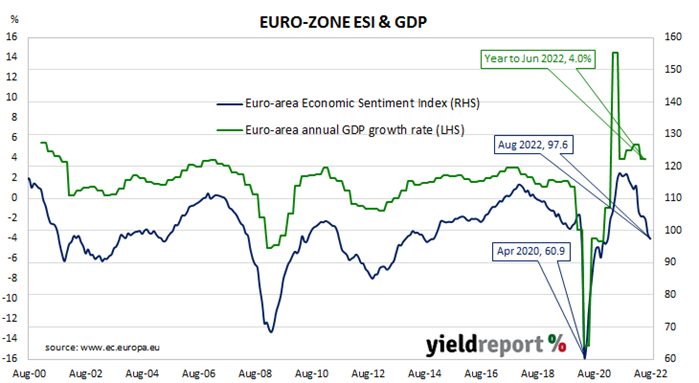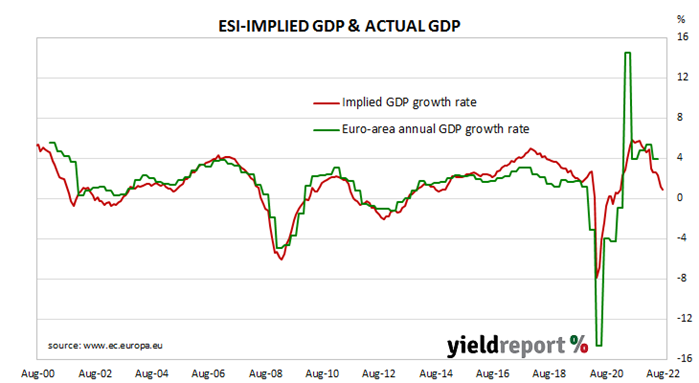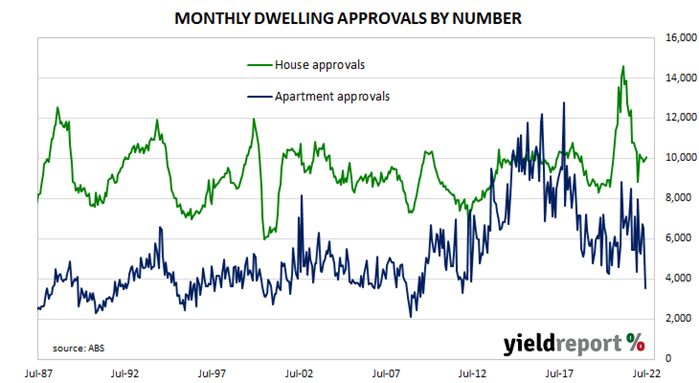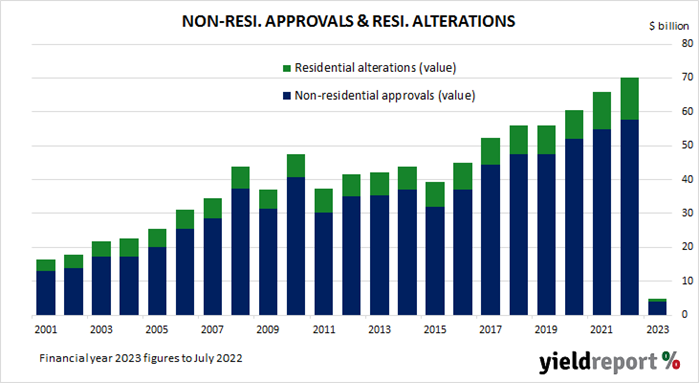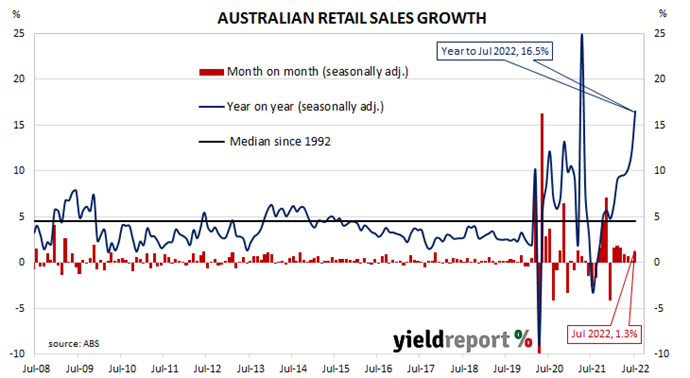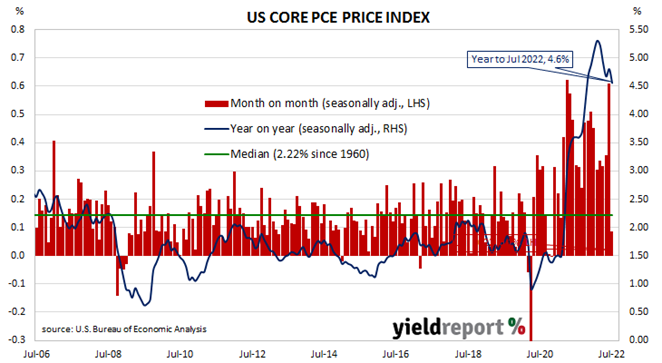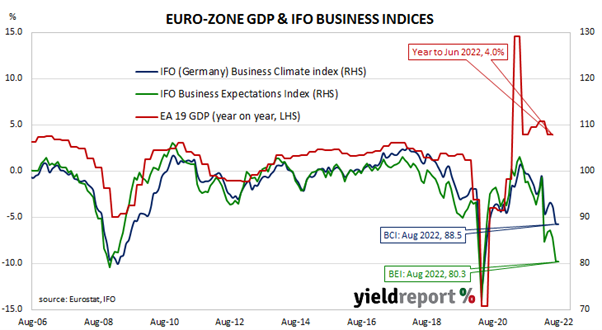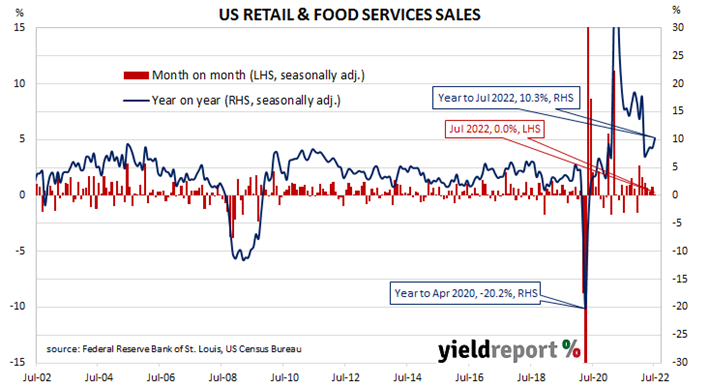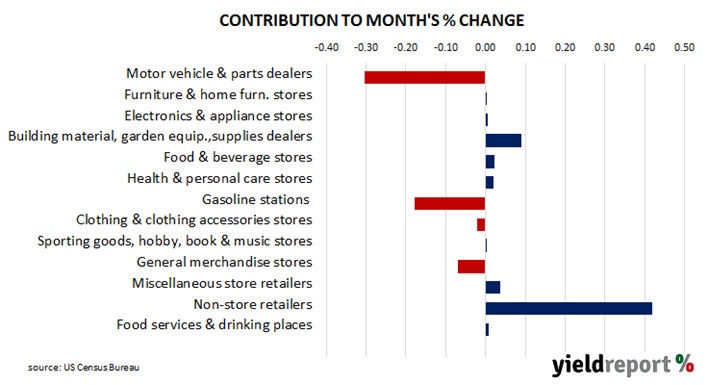Summary: Construction spending down 3.8% in June quarter, contrasts with 2.5% increase expected; supply constraints, bad weather hamper work; construction insolvencies rising; residential sector down 6.8%, non-residential building down 1.1%, engineering down 2.7%.
Construction expenditure increased substantially in Australia in the early part of last decade following a more-steady expansion through the 2000s. A large portion of the increase came from the commissioning of new projects and the expansion of existing ones to exploit a tripling in price of Australia’s mining exports in the previous decade. Growth rates began slowing in 2017 and the return to “normal” investment levels may now have taken place.
According to the latest construction figures published by the ABS, total construction in the June quarter decreased by 3.8%. The fall was in contrast with the 2.5% increase which had been expected but it was not as large as the March quarter’s 0.3% decline after it was revised up from -0.9%. On an annual basis, the growth rate reversed course from 2.3% to -4.3%.
“While the pipeline of detached residential and non-residential construction work remains solid, supply constraints and adverse weather conditions on the east coast of Australia have meant that actual building work would have been less than planned,” said Citi Australia economist Josh Williamson.
Commonwealth Government bond yields fell on the day. By the close of business, the 3-year ACGB yield had lost 5bps to 3.28% while 10-year and 20-year yields both finished 1bp lower at 3.61% and 3.88% respectively.
In the cash futures market, expectations regarding future rate rises softened slightly. At the end of the day, contracts implied the cash rate would rise from the current rate of 1.81% to 2.18% in September and then increase to 2.975% by November. May 2023 contracts implied a 3.76% cash rate while August 2023 contracts implied 3.855%.
ANZ senior economist Catherine Birch noted construction insolvencies were rising. “The consequent disruption in the market, especially after a period of very low insolvency numbers during the pandemic, has likely contributed to the weakness in activity.” Residential building construction expenditures fell by 6.8%, in contrast to the March quarter’s 1.4% increase after revisions. On an annual basis, expenditure in this segment was 7.6% lower than the June 2021 quarter, down from the March quarter’s revised figure of -0.1%.
Non-residential building spending decreased by 1.1%, a turnaround from to the previous quarter’s 0.9%. On an annual basis, expenditures were 0.6% higher than the June 2021 quarter, whereas the March quarter’s comparable figure was +5.1% after revisions.
Engineering construction decreased by 2.7% in the quarter, a greater fall than the 2.1% decrease in the March quarter. On an annual basis, spending in this segment was 4.1% lower than the June 2021 quarter, down from the March quarter’s comparable figure of +2.8% after revisions.
Quarterly construction data compiled and released by the ABS are not considered to be of a “primary” nature, unlike unemployment (Labour Force) and inflation (CPI) figures. However, the figures are viewed by economists and analysts with interest as they directly feed into quarterly GDP figures.




